During our interview with Zeiss Product Manager Christophe Casenave at Photokina, it immediately became clear that the full-frame mirrorless system that Sony has just begun building has piqued the interest of the German brand. Along with the SLR series, Zeiss has a nice line-up of lenses for rangefinder cameras (the now-discontinued Ikon and Leica M system). Building a new line of manual focus lenses specifically designed for Sony full frame E-mount cameras was a natural move especially considering the partnership between Sony and Zeiss. This new family of lenses is called Loxia, which takes its name from a species of bird.
These first two lenses are standard focal lengths: a 35mm and a 50mm. Both are the same size with a fast aperture of f/2. Many users were slightly disappointed not to see a different focal length since there are already a 35mm and a 55mm in the Sony AF lens system but the Loxias weren’t designed to complete with these native lenses. Rather, they were produced for specific kind of user who thoroughly recognises and appreciates Zeiss quality.
Are the two Loxia lenses the beginning of a new and exciting line-up?


[expand title=”The Zeiss Loxia 2/35 and 2/50 Specs”]
- Focal lengths: 35mm
- Maximum aperture: 2
- Minimum aperture: 22
- Number of aperture blades: 9
- Angle of view: 63°
- Closest focusing distance: 30cm
- Lens configuration:9 elements / 6 groups
- Special elements: 1 anomalous partial distortion elements
- Lens surface coating: Zeiss T Coating
- Optical Image Stabilizer: None
- Dimensions: φ62.1 Ø, 66 mm
- Filter diamater: 52mm
- Weight: 340g
- Focal lengths: 50mm
- Maximum aperture: 2
- Minimum aperture: 22
- Number of aperture blades: 9
- Angle of view: 46°
- Closest focusing distance: 45cm
- Lens configuration: 6 elements / 4 groups
- Special elements: None
- Lens surface coating: Zeiss T Coating
- Optical Image Stabilizer: None
- Dimensions: φ62.1 Ø, 66.2 mm
- Filter diamater: 52mm
- Weight: 320g
[/expand]
Design and ease of use
The Loxia lenses are purely manual focus. They feature a mechanical aperture, focus ring and distance scale. The build is excellent, which is all you could expect from Zeiss: the surface and the supplied lens hoods are entirely metallic. They aren’t extremely light but the weight and size feel just right with the A7 body. On the rear there is a line of blue rubber around the border of the lens to prevent any dust from penetrating once it has been mounted on the camera.
The rubber also helps to secure the rear cap on the lens when not in use. However I sometimes had some difficulty unmounting the rear cap with one hand for example when changing lenses on the streets. When this happened, I usually took off the rear cap first while the lens was still in my bag. The mount, the aperture and the focus rings are really close and there isn’t a lot of surface left on the lens that your fingers can grab onto. For this reason, the grip is not the best for this kind of operation. The same thing goes when you mount or unmount the lens.
That said, both rings are excellent to use. They both feel smooth and precise–in short, if you like manual focus lenses, you will love the Loxias. You can really feel the mechanical quality of the construction when using the rings. The Loxias remind me of the build quality of rangefinder lenses but with a modern design.
I enjoyed manually focusing without the use of any MF assist on the camera (peaking or magnification) in an environment where I had the time to compose my image and precisely set my focus. The EVF of the A7 series has enough resolution, and you can be really precise with the focus ring since it has an 180° excursion. Overall it worked for me when focusing close to my subject and when the light was good. However I also used the magnification function to double-check my focus when I wasn’t sure. (I don’t trust peaking on the A7.) It is very easy to miss the focus by a few millimetres especially on full-frame format with a fast aperture. I must also say that I usually don’t do lots of manual focusing and my eye isn’t well-trained.
A nice thing about the Loxia lenses is that they have electronic contacts on the mount so the camera can record exif data. You will always know at which aperture you shot your images. Moreover, you can activate the magnification by simply turning the focus ring. This way you can work faster when you want to double check your focus accuracy. It works for static subjects, but if there is more movement, not being able to see the entire frame might affect your composition.
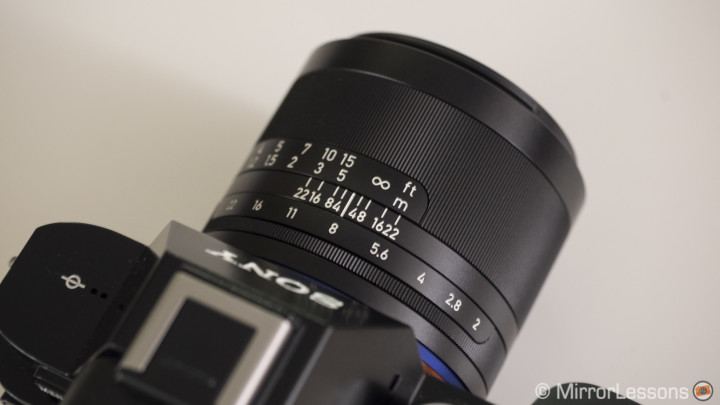
When photographing in the streets you can also use the hyperfocal scale, as it is precise and very easy to use. Unless you accidentally touch or rotate it, the focus ring won’t move from the position to which you’ve set it. Working with the hyperfocal scale, you don’t have to worry about the focus anymore. It is faster than any autofocus lens. Of course it is mainly usable at slow apertures. The Sony A7s becomes an interesting camera for this because its high sensitivity allows you to use higher ISOs and keep your aperture slow. The example below was shot when the sun had just set. I kept my aperture to f/8 and set ISO to Auto with a limit of 3200.

Zeiss also designed the lenses to be used for video purposes. With every Loxia lens there is a special De-Click key (a little flat screwdriver will also do just fine). If you unmount the rear cap, there is a dedicated screw that you can turn by 360° that activates or deactivates the clicking mechanism of the aperture ring. By default, the ring has a clicking mechanism of 1/3 steps which is something that still photographers prefer. However for video it is preferable to use a completely smooth aperture ring to adjust the exposure with more precision. It is a simple yet smart functionality. I didn’t get the chance to use the lenses for video shooting but they will work beautifully as long as you don’t need to add on any accessories. For instance, filmmakers often like to use a follow focus or a matte box for filters. In that case the Loxia lenses are too small to be comfortable. However if you want to keep a low profile, they are a very good choice.
https://instagram.com/p/wg0FW3QeK5/

Through the lens: Image Quality
I won’t write separate chapters for the two lenses because in my opinion they are very similar if not identical when it comes to image quality. The focal length is the only subtle difference. I don’t have enough experience with Zeiss lenses to tell you if the Loxias are faithful to traditional “Zeiss rendering” but what I can say is that they have a softer rendering than the ZA lenses (Sony/Zeiss AF for the FE system). By softer I don’t mean a lack of sharpness but simply a little less resolution. Contrast however is very good and both lenses produce great results at their fastest apertures.

The 35mm has a Biogon design while the 50mm has a Planar design. I haven’t come across any significant loss in sharpness at any aperture or in certain areas of the images. The Loxias perform well all the way from f/2 to f/22 both in the centre and at the corners.

The aspect I liked the most about the two lenses was colour rendering and backlight. Colours appear natural with a subtle warmth in comparison to the ZA lenses. The micro contrast and overall detail are excellent even with backlit shots. With direct sunlight, you will get the classic star flare that can sometimes be a little bit invasive.

The bokeh and out of focus rendering are also pleasant. There are rounded highlights without significant ghosting or swirl effects. With the 35mm you will get better results when focusing closer to your subject. Its ability to separate a subject from a background is not bad but depending on the background and the distance, the bokeh can appear less pleasant with some ghosting and doubling of the out of focus elements. The 50mm behaves better mainly because of its longer focal length.


The Loxias are nearly perfect regarding the absence of chromatic aberration, and vignetting at f/2 is very well contained. I know that this is the minimum one would expect from a high quality Zeiss lens and the Loxias won’t disappoint. There isn’t any distortion either.
Most of the pictures were shot with the A7s. Sadly I didn’t get the chance to borrow an A7 or A7r for a long period of time to see how good the Loxia rendering is on a higher megapixel sensor. However you can check out some of the images I took at Photokina with an A7r. I sincerely doubt that there is any problem with the 36MP sensor since the Loxias have been specifically designed for the Sony full-frame system.
The time I most enjoyed with the two lenses was when I did a mini-reportage a few weeks ago with an artisan working with leather. This is where I think I used them to the best of my ability. It wasn’t the time I tested all the technical aspects but when I took advantage of the lenses’ strongest characteristics: fast aperture, nice soft rendering and a very good tri-dimensional look especially with the 35mm. It was the time when I really appreciated working with manual focus.
Choosing to use one of these lenses is less about pure image quality and more about the quality of the experience when using them. You have the assurance that they are technically excellent and will give you technically excellent results.
Zeiss vs Zeiss
The curiosity to see if there were any substantial differences between the Loxias and the ZA lenses led me to take some comparison shots with Heather (once again!). I already own the 55mm f/1.8 so I borrowed the 35mm f/2.8. Apart from the obvious differences regarding aperture and focal length, I wanted to see if there was a difference especially at the fastest apertures. The truth is rather anticlimactic: I didn’t see many. The ZA autofocus lenses are slightly sharper at their fastest apertures with a slightly colder rendering in terms of colour. But these aren’t differences you will see right away from a distance.
You may be thinking: why buy Loxia lenses when you can find a ZA prime lens for less money? The answer is that it doesn’t have anything to do with image quality. The ZA lenses are Zeiss lenses as well. They are designed by Zeiss and built by Sony. The 55mm is already considered one of (if not the best) autofocus prime lenses ever built. Among the lenses for the Sony FE system, it is currently the only one that clearly stands out as a “must have” lens if you own an A7 camera. I doubt that Zeiss could do better with the 50mm Loxia. As for the 35mm, there is the one stop advantage on the Loxia 2/35 in comparison to the 35mm f/2.8 ZA. If I had to choose between the two, I would consider the Loxia 2/35 because I really love that focal length and the f/2 aperture can be useful.
The 35mm f/2.8 is really small however. It is almost a pancake lens and is very light as well. The difference between the 55mm and the Loxia 50mm is more negligible (the 55mm ZA is slightly lighter and longer).
To me the answer is pretty simple. If you want autofocus, you go for the ZA lenses. They are less expensive after all. If you like manual focus, mechanical rings and distance scales, then the Loxias are a perfect choice for the system.
Conclusion

I will observe the evolution of this new family of lenses from Zeiss with interest. The first two members are excellent in every way, from the build quality to the performance and image quality they deliver. Perhaps they don’t represent the “dream lenses” you might wish to have on your A7 camera but they fit into the system just right: indeed the size and weight is optimal for the A7 system. If they release more lenses, all the while keeping the same aperture and dimensions, then the Loxia family could become a great line-up, somehow a modern and “designed for digital” version of the ZM family. Personally I am waiting for a wide angle lens (24mm or 21mm) and a portrait lens. Then, with the 35mm, I could own the ideal trio for my A7s to carry around for personal projects and travel.
Do you own a Sony A7/r/s? Are you interested in the Loxia lenses? Leave a comment below and tell us what you think!




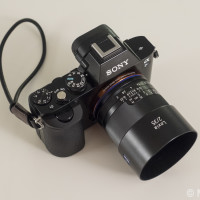


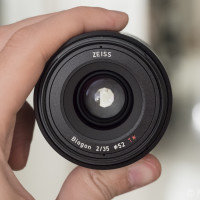


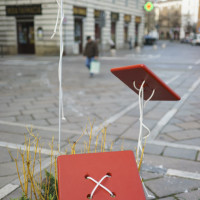







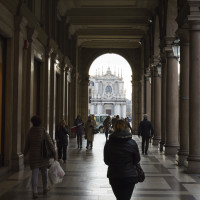



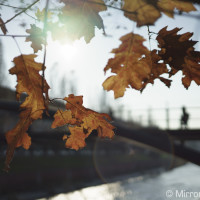



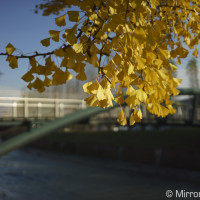









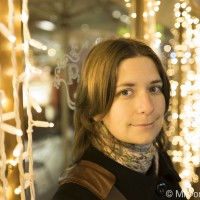

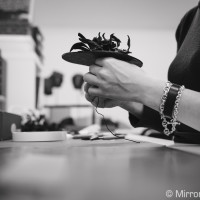









Thanks Herb. Now that I’ve tried them, if I had to buy a lens for my personal use, I would by a Loxia and not a Leica lens. Leica lenses are great, but the Loxia are great too and they are designed specifically for the Sony sensor. You don’t need an adaptor, you get MF assist and exif data. It’s an optimal combination.
Your review is as always very balanced and to the point. A rare find on the net.
I have been using the Loxia 50mm on the new Sony A7II for mainly landscape work for a week. To say the Loxia’s are more videographers lenses or just relatively affordable manual focus alternatives to the Sony’s is not doing them completely justice in my experience. I have been comparing this combination with my Leica M240 with the 50 mm Summilux and all that I can conclude sofar is that the Sony/Loxia combination is at least as good as the Leica/Lux alternative. The detail resolution at infinity of the Sony/Loxia is astounding from f/5.6 to f/11 corner to corner and even with an AA filter it equals or even surpasses the Leica combination. In A3+ prints I could not detect any meaningful differences. To me the A7II with the Loxia 50 mm lens is an almost perfect camera. It is an optimal match, like a fixed camera/lens combination as the Ricoh GR, Sigma Merrill’s/Quattro’s, Sony RX1(r). Operationally it works also great. Far less frustrating for me than any autofocus system. If the Loxia line expands in this quality I see no reason anymore to invest in Leica unless you really want the rangefinder experience.
The main downfall with the Loxia 35mm f/2 is really its price point. For $1,299, you can just about get a Leica Summicron 35mm f/2 in good condition. The Leica will hold its value or appreciate in price over time, whereas the system specific Loxia will not.
Aa a side note, if there’s a way to hack the A7 series so it would automatically turn on the zoom magnification while manual focusing any lens, that would be the dream.
I had the 55/1.8 but sold it and have ordered the ultimate manual for me, the Loaxia 2/50.
Thanks Robert-Paul. The 55m is actually slightly more expensive you are right. I was thinking mainly on the price difference between the two 35mm and I didn’t check the 50mm prices 🙂
I have thought a long time wether to buy the Loxia50 or 55mm 1.8. In the end I have choosen for the 55, mainly because of the autofocus as I use it a lot for my kids. It did made me think about using manual focus more and I have used it a lot the two weeks I have had the new camera.
I’m very happy with the 55, it’s a superb lens .. can’t wait to try it out more this weekend!
By the way, the Loxia50 is sold for 865 euros in various shops in the Netherlands while the 55mm will cost 999 euro. Over here the Sony is more expensive.